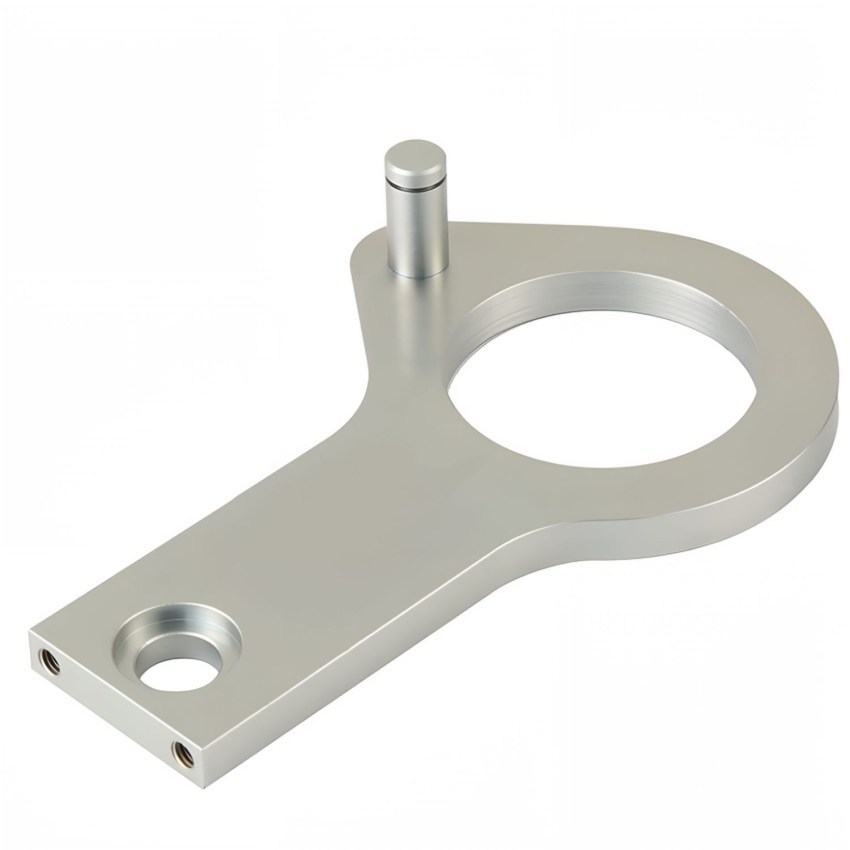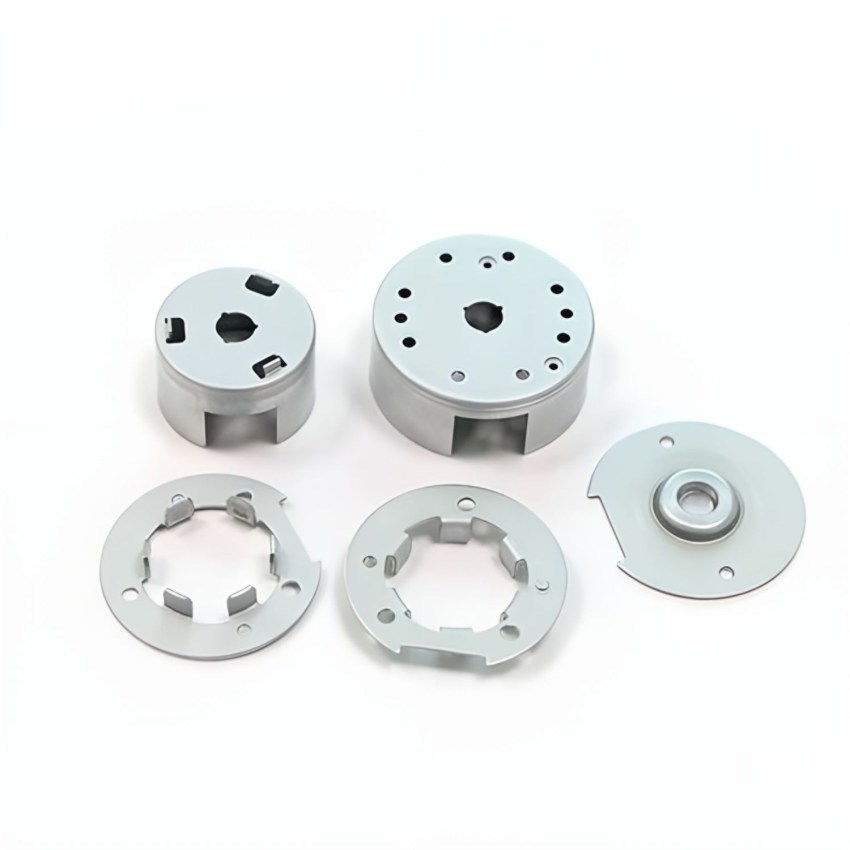Unlocking Efficiency: The Role of Precision CNC Machining Parts in Modern Manufacturing
Release time:
2025-03-09
Unlocking Efficiency: The Role of Precision CNC Machining Parts in Modern Manufacturing Table of Contents 1. Introduction to CNC Machining 2. The Evolution of Manufacturing Processes 3. Understanding Precision CNC Machining 3.1 What is CNC Machining? 3.2 Key Components of CNC Machines 4. The Importance of Precision in Manufacturing 4.1 How Precision Affects Product Quality 4.2 Re

Unlocking Efficiency: The Role of Precision CNC Machining Parts in Modern Manufacturing
Table of Contents
1. Introduction to CNC Machining
2. The Evolution of Manufacturing Processes
3. Understanding Precision CNC Machining
3.1 What is CNC Machining?
3.2 Key Components of CNC Machines
4. The Importance of Precision in Manufacturing
4.1 How Precision Affects Product Quality
4.2 Reducing Waste Through Precision
5. Benefits of Using CNC Machining Parts
5.1 Enhanced Efficiency and Productivity
5.2 Cost-Effectiveness in Production
5.3 Versatility in Manufacturing
6. The Role of Advanced Technologies in CNC Machining
7. Case Studies: CNC Machining in Action
8. Future Trends in CNC Machining
9. Frequently Asked Questions (FAQs)
10. Conclusion
1. Introduction to CNC Machining
In the rapidly evolving world of manufacturing, the term **CNC machining** has become synonymous with **efficiency** and **precision**. This process employs computer numerical control to automate the machining of parts, enabling manufacturers to produce complex and intricate designs with remarkable accuracy. As businesses strive for greater productivity, understanding the role of precise CNC machining parts in modern manufacturing is crucial for staying competitive.
2. The Evolution of Manufacturing Processes
Manufacturing has come a long way since the days of manual labor and simple machines. The introduction of automated processes has revolutionized how products are made. CNC machining represents a pivotal shift towards **automation**, drastically improving production times and reducing human error. The transition from traditional machining to CNC technology has opened new avenues for growth and innovation in the manufacturing sector.
3. Understanding Precision CNC Machining
To fully appreciate the significance of precision CNC machining, one must first understand its fundamental principles.
3.1 What is CNC Machining?
CNC machining refers to a manufacturing process controlled by computer software, where pre-programmed software dictates the movement of factory tools and machinery. This allows for high levels of precision and repeatability, which are essential in industries such as aerospace, automotive, and medical device manufacturing.
3.2 Key Components of CNC Machines
CNC machines consist of several key components, including:
- **Controller:** The brain of the CNC machine, interpreting the program and directing the machine's movements.
- **Drive Motors:** These provide the necessary power and movement to the machine's axes.
- **Feedback Systems:** These monitors the position of the machine's tools and ensure accuracy during operation.
Understanding these components helps elucidate how CNC machining achieves its renowned precision.
4. The Importance of Precision in Manufacturing
Precision is not just a buzzword; it is a fundamental requirement in modern manufacturing. The importance of precision in CNC machining cannot be overstated.
4.1 How Precision Affects Product Quality
High precision in CNC machining translates directly to superior product quality. Parts manufactured with precision fit together seamlessly, which is critical in applications where safety and functionality are paramount.
4.2 Reducing Waste Through Precision
Precision machining minimizes material waste by ensuring that parts are cut to exact specifications. This reduction in waste not only saves costs but also promotes sustainability by reducing the environmental impact of manufacturing processes.
5. Benefits of Using CNC Machining Parts
The adoption of CNC machining parts offers numerous benefits that contribute to unlocking efficiency in manufacturing.
5.1 Enhanced Efficiency and Productivity
CNC machining drastically reduces production times. With the ability to run 24/7, CNC machines can produce components faster than manual machining processes, enabling manufacturers to increase output and meet market demands efficiently.
5.2 Cost-Effectiveness in Production
Although the initial investment in CNC technology can be significant, the long-term savings are substantial. Reduced labor costs, minimal material waste, and decreased production times all contribute to a more cost-effective manufacturing process.
5.3 Versatility in Manufacturing
CNC machines can work with various materials, including metals, plastics, and composites. Their adaptability allows for the production of a wide range of parts, making them suitable for diverse industries and applications.
6. The Role of Advanced Technologies in CNC Machining
As technology continues to advance, CNC machining is becoming more sophisticated. Innovations such as **artificial intelligence** and **machine learning** are being integrated into CNC systems, enhancing their capabilities. These technologies facilitate predictive maintenance, optimizing machine performance and reducing downtime.
7. Case Studies: CNC Machining in Action
Several industries have successfully implemented CNC machining to revolutionize their manufacturing processes. For example, in the **aerospace sector**, precision parts are critical for safety and performance. Companies using CNC machining have reported significant improvements in both product quality and production efficiency.
8. Future Trends in CNC Machining
The future of CNC machining is bright, with emerging trends such as **additive manufacturing** and **smart factories**. These innovations promise to further enhance the efficiency and capabilities of CNC machining, making it an indispensable part of modern manufacturing.
9. Frequently Asked Questions (FAQs)
**Q1: What industries benefit most from CNC machining?**
A1: Industries such as aerospace, automotive, medical devices, and electronics greatly benefit from CNC machining due to the need for precision and repeatability.
**Q2: How does CNC machining improve production times?**
A2: CNC machines can operate continuously and do not require breaks, significantly increasing production speed compared to manual machining.
**Q3: Is CNC machining suitable for small production runs?**
A3: Yes, CNC machining can efficiently produce both small and large production runs, making it versatile for different manufacturing needs.
**Q4: What materials can be used in CNC machining?**
A4: CNC machining can work with a wide variety of materials, including metals, plastics, wood, and composites.
**Q5: How can businesses ensure quality in CNC machining?**
A5: Implementing strict quality control measures, using high-quality materials, and employing skilled operators can help ensure consistent quality in CNC machining parts.
10. Conclusion
Precision CNC machining parts play a pivotal role in modern manufacturing, unlocking efficiency and enhancing productivity across various industries. As the manufacturing landscape continues to evolve, CNC machining will remain at the forefront, driven by advancements in technology and a relentless pursuit of precision. By embracing CNC machining, manufacturers position themselves for success in an increasingly competitive market, ensuring they meet both current demands and future challenges efficiently.
Key words:




